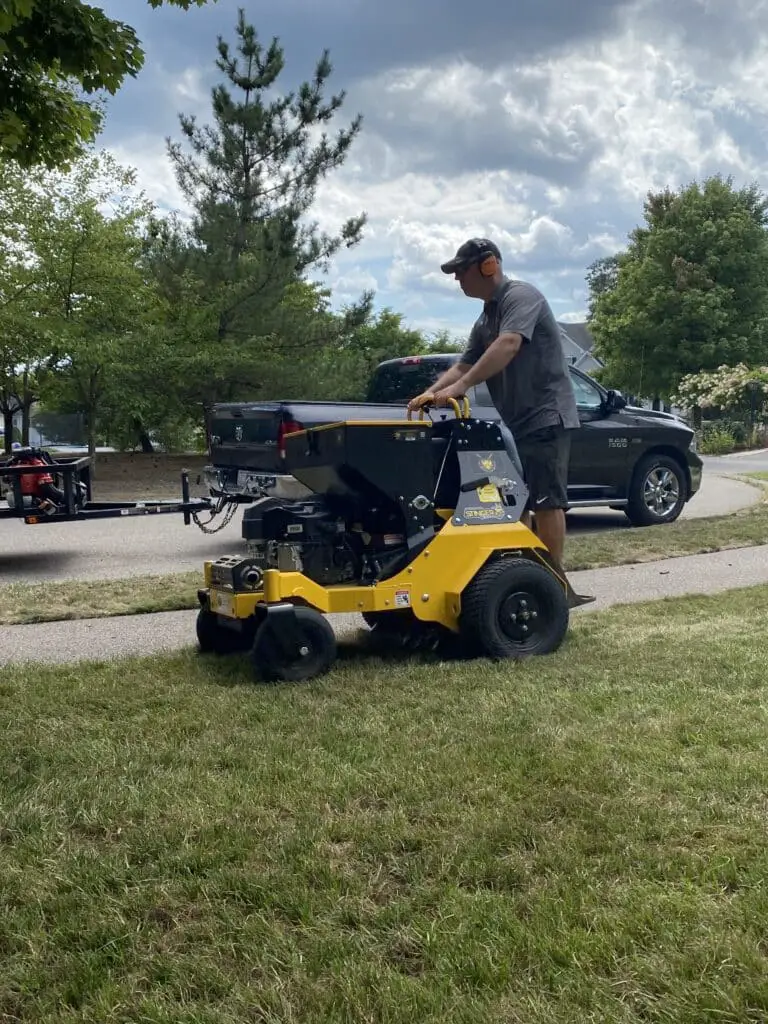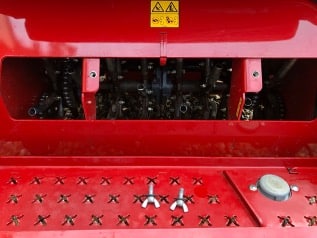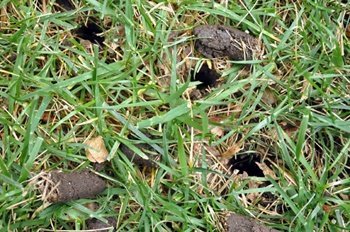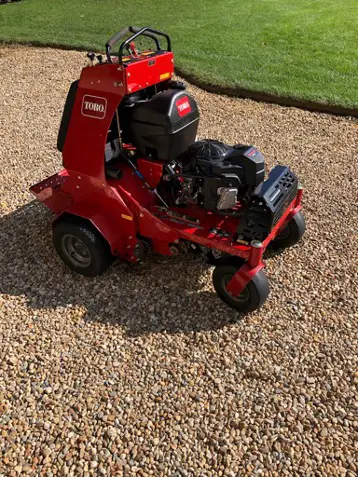Late summer and early fall are the best times to aerate and overseed your lawn, especially if your lawn contains cool season grass. If you have warm-season grass, you should perform aeration and overseeding in early summer for best results. The combination of warm soil temperatures and cooler nights make this the best time to aerate and overseed your lawn.
Achieving a thick, healthy lawn with a rich green hue isn’t a matter of luck. A lush lawn depends on water, sunlight, proper nutrients, and various tasks that support its health. Most lawns need aeration at some point; many need it annually. If your lawn struggles with bare patches and compact soil, you should aerate, overseed, and apply starter fertilizer to promote improved grass growth and soil conditions. A healthy lawn doesn’t generally happen by chance, but effective lawn maintenance tasks like aeration and overseeding can help you maintain and improve your existing lawn.
What Is Lawn Aeration?
Aerating your soil improves its circulation of air and water, allowing the grass roots to obtain the water, nutrients, and oxygen it needs for healthy growth. While some people prefer to hire a landscaping or lawn aeration service to perform this task, especially for large yards or tracts of lawn, others prefer to manage their own lawn care tasks. By taking time to aerate your lawn and bare areas of your lawn, you can improve your lawn’s health.
Aeration involves poking holes in the soil so that water and air can penetrate deeper into the ground where they can promote better root growth and reach deep roots. Lawn aeration also alleviates soil compaction, a condition that makes it difficult for rainwater or sprinkler water to effectively penetrate the dense soil and reach the roots. Healthy grass is dependent on good air circulation and the proper amount of water and nutrients. Lawn aeration allows your grass to better access what it needs to grow lush and healthy. Aeration also prevents excessive thatch from building up, which can block water and nutrients from penetrating the soil.

Core Aeration vs Spike Aeration
The two basic methods of lawn aeration are core aeration and spike aeration. Core aeration is a more effective method of alleviating lawn compaction and is generally the better option, especially for lawns with high traffic and heavily compacted soil. Most landscaping and lawn aeration service providers also opt for core aeration. But what’s the difference between these methods?
Core aeration can be done with a manual core aerator or gas-powered mechanical aerator. Regardless of the type, core aerators have hollow tines that poke holes in the soil. Because the tines are hollow, they actually remove small soil plugs that then act as compost for your lawn.
To perform core aeration, you or your lawn care service will either aerate the entire lawn or small sections that are in need of it because of heavily compacted soil. Core aeration will also reduce the need to dethatch your lawn. Manual aeration is time-consuming, but many home improvement centers rent gas-powered core aeration machines to customers.
Spike aeration can be performed with a pitchfork or a spike aerator. Because the solid tines of these aerators are not hollow, they do not remove soil; they simply poke holes in it to temporarily open up air spaces. The surrounding soil, however, will eventually move back into space. This method may be fine for soils with only slight or moderate compaction, but it isn’t ideal for lawns with heavy foot traffic. However, in the long run, spike aeration can increase the likelihood of soil compaction, especially in soils with high clay content.


What Is Overseeding a Lawn?
Aeration and overseeding are, in fact, separate lawn care tasks, but they’re often performed at about the same time. Overseeding simply means spreading new grass seeds onto your current lawn. Once you’ve aerated your soil, conditions are ideal for overseeding. Overseeding your lawn will help you fill in bare patches and promote thick, healthy grass.
Types of Grass Seed
When choosing grass seed to overseed your lawn, you’ll want to consider your existing lawn type, as well as your soil type and climate. Using a variety of grass seeds is an effective method for growing a healthy lawn with superior weed control, pest resistance, and disease resistance.
Remember that cool season grasses and warm season grasses have different needs. Choosing the right type of grass seed for your setting is important. Warm season grasses are not likely to perform well in the north or Pacific northwest. Cool season grasses will not thrive in sub-tropical locations like south Florida. Also, before choosing grass seed for your lawn, consider your specific conditions. For instance, some grass types can handle partial shade conditions better than others.
Lawn Aeration and Overseeding FAQs
Should I overseed before or after aerating?
It’s typically best to perform lawn aeration first and then overseed the lawn. Aeration helps render the soil beneath your grass amenable for planting. Combining aeration and overseeding may be more convenient and will not be a problem for your existing grass.
What month should I aerate my lawn?
If you have cool season grass, the best time to aerate your lawn is in late summer or early fall. If you have warm season grass, the best time to aerate it is in early summer.
Should you aerate and seed your lawn at the same time?
Many lawn care experts recommend lawn aeration and overseeding at the same time. Many people prefer to aerate first and then overseed. However, be sure to perform overseeding within about 48 hours of aerating your lawn.
When is the best time to overseed a lawn?
Like aeration, late summer / early fall is the best time for overseeding.

